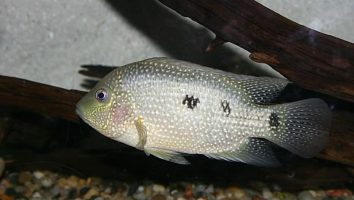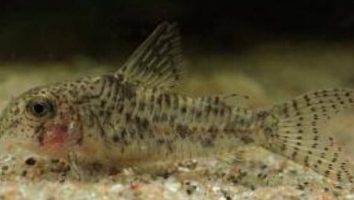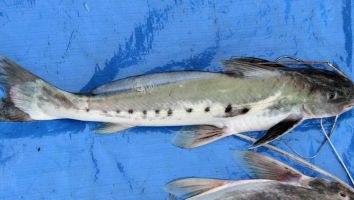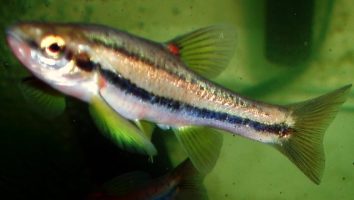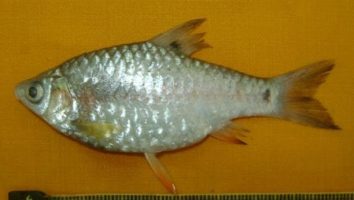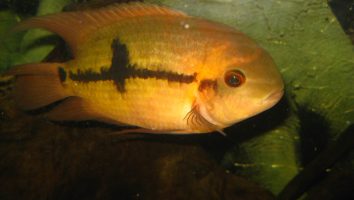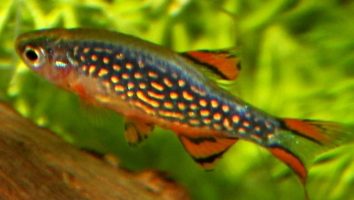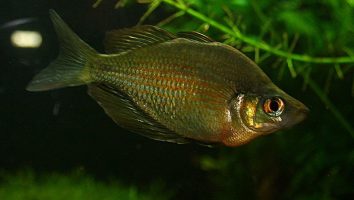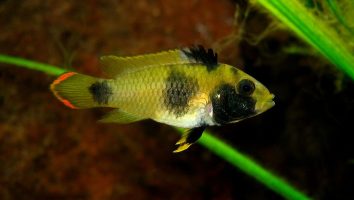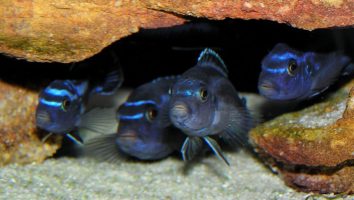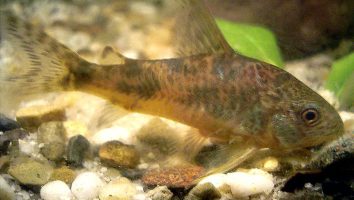The glass knifefish is a freshwater fish that is native to South America.
This species is relatively new to the aquarium trade, but they’re becoming more and more popular due to their unique appearance.
Glass knifefish are see-through, which gives them a very cool and ethereal look.
But before you run out and buy one of these fish, there are a few things you need to know.
In this guide, we’ll teach you everything you need to know about glass knifefish care. Tank size, diet, lifespan, and more.
Table of contents
Species overview
Glass knifefish (Eigenmannia virescens) are a type of electric fish that’s found in freshwater habitats throughout much of South America.
They prefer slow-moving waters with a lot of vegetation, and they are often found in close proximity to other electric fish species.
Electric fish are able to generate electrical fields which they use for communication and navigation. These fields are also used to detect prey.
The glass knifefish is a popular choice for aquariums because of its unique appearance and the fact that it is relatively easy to care for.
Appearance
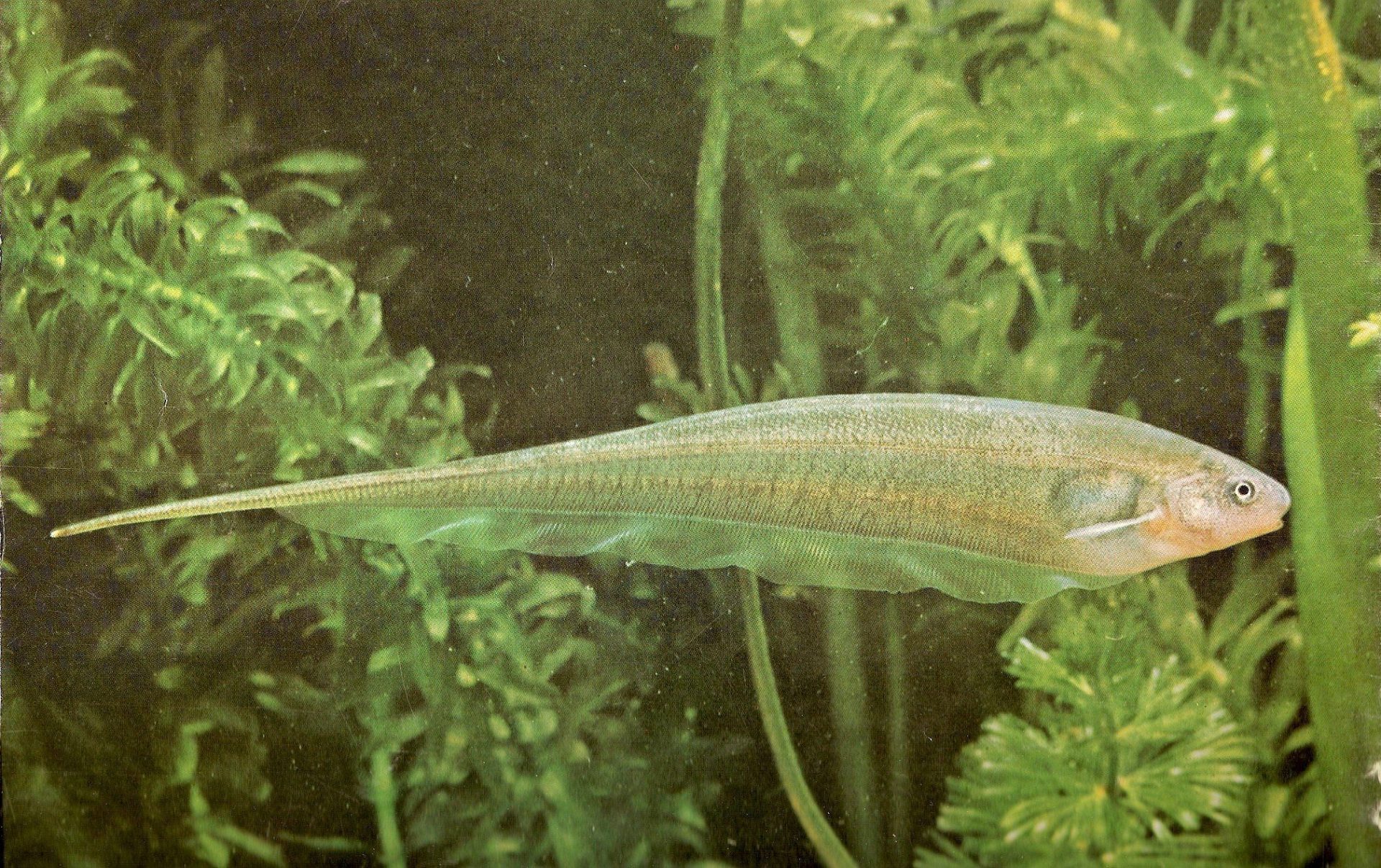
The first thing you’ll notice about the Glass knifefish is their unique shape. These fish are long and eel-like with a transparent body.
This transparency isn’t just limited to their skin either. You can actually see some of their internal organs if you look closely enough!
Their eyes are fairly large and sit on top of their head. Right behind their eyes, they have a long dorsal fin that runs the length of their body.
This dorsal fin is tall and quite noticeable. The Glass knifefish also has a small anal fin and a forked caudal fin.
All of their fins are clear like the rest of their bodies. The only thing that isn’t transparent is their black eyes.
Lifespan
In captivity, glass knife fish have an average lifespan of 5 to 8 years. In the wild, their lifespan is probably a bit shorter due to predation and other risks.
As with all fish, there are a number of things that can impact their lifespan. Poor water quality, for example, can shorten their life considerably.
Stress is also a big factor. If these fish are constantly being harassed by tank mates or if they’re not getting enough to eat, their lifespan will be reduced.
Size
Glass knifefish typically grow to be about 12 inches in length, but they can reach up to 18 inches in some cases.
Tank
Tank Size
The recommended minimum tank size for glass knifefish is 30 gallons. This is assuming you’re keeping them in a school of at least 5 or 6 fish (which you should).
We personally recommend a slightly larger tank if you can accommodate it. Every extra space will make a big difference and allow you to keep a larger school or more tank mates if you’re interested in a community tank.
Water Parameters
This is a freshwater fish that is found in the Amazon Basin. The water parameters that you will need to maintain for the Glass Knife fish are:
- Water temperature: 21 to 27 degrees Celsius
- pH levels: 6.0 to 7.5
- Water hardness: 2 to 12 dGH
- Alkalinity Levels: 4-8 dKH
What To Put In Their Tank
When it comes to setting up the inside of an aquarium for glass knifefish you can be as creative as you want. There aren’t any specific things that this species NEEDS to have, which gives you plenty of options.
We recommend some of the standard decorations that you find in a lot of freshwater tanks. There are a ton of great plants you can include (like hornwort or water wisteria). You can even throw in some floating aquarium plants too!
Rocks, driftwood, and caves are all suitable as well. It’s important to avoid going overboard with this since these fish like some room to swim.
Also, if you’re keeping your glass knifefish in a smaller tank then it’s going to be difficult to include a lot of this stuff anyway.
A classic gravel substrate is always a good choice, but you can do with something soft and sandy if needed too (use other species you keep as a guide with this).
Common Diseases
Glass knifefish are pretty hearty creatures and don’t fall ill often. However, there are a couple of diseases that you should be aware of.
The first one is white spot disease, also known as ich. This is a pretty common parasite that can plague any freshwater fish. It’s most easily identified by the white spots it leaves on the fish’s body.
If left untreated, ich can be pretty serious. However, it’s usually pretty easy to treat with a little bit of medication.
The other disease you might see in your glass knifefish is hole-in-the-head disease. This is another pretty common disease, especially in cichlids. It’s caused by poor water quality and is most easily identified by the holes it leaves in the fish’s head.
Again, this is a disease that can be pretty serious if left untreated. However, it’s usually pretty easy to fix by simply improving the water quality in your tank.
In general, the best way to keep your glass knifefish healthy is to simply maintain a clean and healthy habitat. These fish are pretty hearty, but they’re not immune to poor water quality.
By keeping the tank clean and the water quality high, you’ll significantly reduce the chance of your fish getting sick.
Behavior & Temperament
The glass knifefish is a nocturnal creature, so it’s most active at night. During the day, it rests in hiding places, such as caves or thick vegetation.
This fish is a loner by nature. It’s not a social creature and does not do well when kept with other fish. In fact, it’s best to keep only one glass knifefish per tank.
The glass knifefish is a timid creature that is easily scared. It’s easily intimidated by larger fish and can be bullied by more aggressive tank mates. It’s important to make sure the glass knifefish has plenty of places to hide so it can feel secure in its environment.
This fish is not aggressive and will not attack other fish. However, it is an opportunistic feeder. If it sees an opportunity to snag some food, it will take it.
Tank Mates
Glass knifefish are predators. In the wild, they feed on smaller fish, shrimp, and insects. As a result, it’s important to be careful about the tank mates you choose.
These fish are best kept with other predators or large peaceful fish. Smaller fish are simply too easy for them to eat and should be avoided.
Additionally, glass knifefish are shy and reclusive. They’re not social creatures and do best when left alone. As a result, it’s best to avoid tank mates that are too active or boisterous.
Glass knifefish are also sensitive to water conditions. They come from slow-moving waters in the Amazon and require similar conditions in captivity.
Some good tank mates for glass knifefish include:
- Oscar Fish
- Green Terror Cichlid
- Convict Cichlid
- Firemouth Cichlid
- Jack Dempsey Cichlid
- Plecostomus
Breeding
The glass knifefish is a rare find in the aquarium trade. They’re not the easiest fish to take care of, but their unique appearance and behavior make them a fun challenge for experienced aquarists.
If you’re up for the task of keeping these fish, you might be interested in breeding them as well. It’s not an easy process, but it can be done with some patience and dedication.
The first step is to set up a breeding tank. It should be at least 30 gallons in size and equipped with a filter and heater. The water should be kept at a temperature of 72 to 78 degrees Fahrenheit.
Next, you’ll need to add some plants and hiding places. Glass knifefish like to have a lot of places to hide, so make sure the tank is heavily planted. You can also add driftwood and rocks.
Once the tank is set up, it’s time to add the fish. You’ll need at least two, but more is better. It’s best to have two females for every male.
The next step is to trigger spawning. The easiest way to do that is to lower the water level by about 10 percent. You can also raise the temperature a few degrees.
If everything goes according to plan, the female will lay her eggs on the plants or driftwood. The male will then fertilize them.
Once the eggs are fertilized, the male will guard them until they hatch. This can take anywhere from 24 to 48 hours.
Once the fry have hatched, you can remove the adults from the tank. The fry will feed on microscopic organisms in the water, but you can supplement their diet with baby brine shrimp or crushed-up flake food.
As they grow, you can slowly start to introduce them to live foods. Keep in mind that glass knifefish are not the easiest fish to take care of. They’re sensitive to water quality and can be shy. Make sure you do your research before you decide to add them to your tank.
Conclusion
Glass knifefish care is not for the faint of heart. These fish are difficult to keep and are not recommended for beginners.
However, if you’re up for the challenge and have the necessary experience, these fish can be a joy to own.
Their unique look and personality make them stand out in a crowd and they’re sure to be a conversation starter in your home.
If you think you’re up for the challenge, we say go for it! Just be sure to do your research first and be prepared for a bit of a learning curve.

